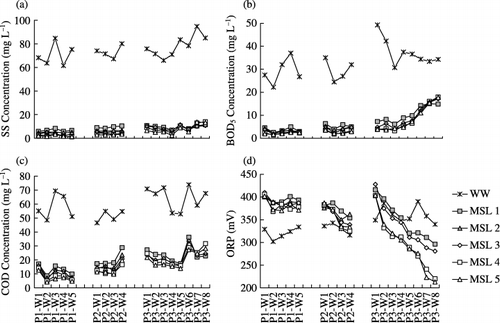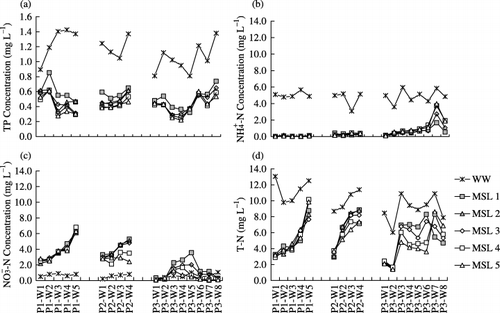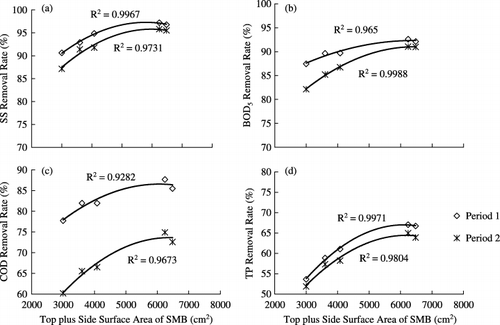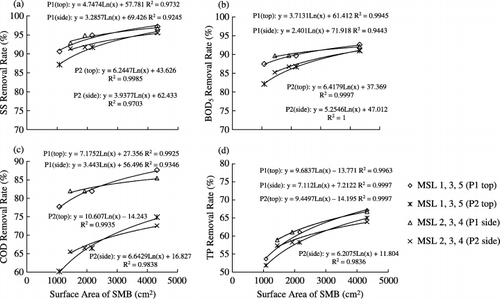Figures & data
Figure 1 Structure and components of the five multi-soil-layering (MSL) systems (W50 cm × H60 cm × D10 cm) used for wastewater treatment. The size of the soil mixture block (SMB) is shown in parentheses (W cm × H cm × D cm).

Table 1 Top surface area (cm2), side surface area (cm2) and total volume (cm3) of the soil mixture blocks in the five multi-soil-layering (MSL) systems
Table 2 Operation period, time, multi-soil-layering (MSL) systems, hydraulic loading rate (HLR) and temperature during the three experimental periods
Figure 2 Concentration of (a) suspended solids (SS), (b) biological oxygen demand (BOD5) and (c) chemical oxygen demand (COD), and (d) the value of the oxidation–reduction potential (ORP) in the wastewater (WW) and in the treated water of the five multi-soil-layering (MSL) systems as affected by hydraulic loading rate. P, period; W, week.

Table 3 Average concentrations (mg L−1) and removal efficiency (%) of suspended solids (SS), biological oxygen demand (BOD5), chemical oxygen demand (COD), total phosphorus (T-P) and total nitrogen (T-N) in the multi-soil-layering (MSL) systems during the three experimental periods
Figure 3 Concentration of (a) total phosphorus (T-P), (b) -N, (c) -N and (d) total nitrogen (T-N) in the wastewater (WW) and treated water of the five MSL systems as affected by hydraulic loading rate. P, period; W, week.


